This article was co-authored by Tanisha Hall. Tanisha Hall is a Vocal Coach and the Founder and Executive Director of White Hall Arts Academy, Inc. an organization based in Los Angeles, California that offers a multi-level curriculum focused on fundamental skills, technique, composition, theory, artistry, and performance at a conservatory level. Ms. Hall's current and previous students include Galimatias, Sanai Victoria, Ant Clemons, and Paloma Ford. She earned a BA in Music from the Berklee College of Music in 1998 and was a recipient of the Music Business Management Achievement Award.
There are 9 references cited in this article, which can be found at the bottom of the page.
wikiHow marks an article as reader-approved once it receives enough positive feedback. In this case, 93% of readers who voted found the article helpful, earning it our reader-approved status.
This article has been viewed 77,216 times.
The most important part of singing is knowing how to breathe properly. Without proper breath support, your voice won’t be able to support the notes you want to sing. How you inhale will affect how you exhale, which will then affect the quality of sound, volume, pitch, and tone of your voice. With a solid understanding of how to properly breathe, you will be able to fully utilize your singing voice and become a much better singer!
Steps
Using your Diaphragm for Breathing
-
1Place one hand on your lower back and one on your abdomen. Before you even begin to sing or practice breathing, place your hands on your back and abdomen, near waist-level. This will help you feel your body’s movement as you inhale and exhale deeply. You will feel your body expand as you breathe in and contract as you breathe out.[1]
-
2Inhale by filling your lower lungs with air. As you inhale with a deep breath, visualize yourself filling the lower portion of your lungs with air.[2] This will feel different from your normal breathing because our relaxed, daily breathing is usually quite shallow. As you breathe in, your hands on your back and abdoment should move outward.[3]
- It may help to visualize yourself filling your stomach with air, as it if is a balloon.
Advertisement -
3Exhale by allowing your stomach to contract. As you exhale, try to exhale all of the air in your lungs, so that the next time you inhale, you will be starting with all new air. Imagine that your stomach is a balloon and you are deflating it. Your abdomen will contract at this point, moving your hands inward.[4]
-
4Do not move your chest.[5] As you breathe, do not allow your chest to move. Your chest and shoulders normally move up and down in your daily breathing, but when you are singing, you will want to always breathe from the deepest part of your lungs. When you are breathing from the lower part of your lungs (your diaphragm), your chest should very little, if at all.[6]
- Focus on breathing horizontally, rather than vertically. Breathing horizontally means that your diaphragm and abdoment should move outward instead of the usual up-and-down movement that accompanies shallower breathing.
Strengthening Your Diaphragm
-
1Place one hand on your abdomen and the other on your back. You will place your hands near waist level. This will allow you to feel how your body moves as you inhale and exhale.
-
2Inhale forcefully. As you inhale through your mouth, visualize the air moving into your diaphragm, the muscles below your lungs that help you to inhale and exhale. Your hands should move outward as you fill your lower lungs with air.[7]
-
3Exhale forcefully. Use your stomach muscles and diaphragm to force the air rapidly and with force. Exhale through your mouth. You will feel your hands moving inward as your diaphragm contracts.[8]
-
4Repeat thirty times. As you do this, visualize yourself breathing horizontally, rather than vertically. Your abdomen will expand and contract horizontally as you do so. Start out slowly and then pick up the tempo as you continue. If you find yourself slipping into breathing with your chest, stop and start over, breathing slowly again.[9]
- Repeat this exercise once or twice daily.
Using Visualization for Effective Breathing
-
1Imagine there is a rubber ring around your waist. The key to effective breathing for singing is in the breath. The most important aspect of breathing is breathing with your diaphragm, the muscles underneath your lungs that help them to move air in and out. A great way to visualize breathing with your diaphragm is to picture a rubber ring around your waist. This ring will move in and out, getting bigger and smaller, with each inhale and exhale.[10]
-
2Breathe in and attempt to push the ring outward. As you inhale through your nose, visualize the ring around your waist getting bigger and expanding horizontally. Your stomach should protrude as you inhale this way.[11]
-
3Breathe in through your nose and out through your mouth. As you exhale, attempt to make the ring contract and become smaller. This visualization should help you to breathe with your diaphragm, thus improving your singing. Breathing through your nose ensures better breath control and helps you to breathe in more slowly, allowing you to focus on how you are breathing, rather than how much air you are sucking in.[12]
-
4Avoid tension in the shoulders. It is common to hunch your shoulders as you breathe. Sometimes tension creeps up on us. Another important aspect of singing is to relax our muscles. This will allow them to move properly. If you feel tension in your shoulders, remind yourself to relax. Visualize your neck getting longer and the tension melting away from your shoulders and into the ground. It can also help to take a few long, deep, slow breaths to relax and stabilize your mind and body.[13]
Utilizing Breathing Exercises
-
1Lay flat on your back. Find a flat surface where you will be able to comfortably lay down and stretch out. If you have trouble laying flat on a hard surface, try a carpeted surface or your bed. Use a pillow to support your neck, back, or knees, wherever you feel you need support.
-
2Place your hands on your waist. You will place your hands on either side of your belly button. Your fingers will point toward your belly button.[14]
-
3Fill your stomach from the bottom to the top as you inhale. Do not aim to fill yourself until you feel like you are bursting; rather, inhale just enough air to feel the difference between shallow breathing with your chest and deep breathing with your diaphragm. During the inhale, you will feel your hands raise up and outward as they rest gently on your belly. As you breathe in, fill your abdomen from the bottom to the top, noticing your stomach rising first, then your chest.[15]
- You should not only feel your body expanding at the front, where your hands are, but also at the sides and back.
-
4Breathe out to a count of five. Gently exhale and slowly count to five. Do not worry about getting all of the air out of your lungs. You will simply notice your stomach area contract, starting with your stomach and ending with your chest.
-
5Repeat ten times. Whenever you do this breathing exercise, repeat it ten times. Practice it daily, once before you get up in the morning and once before you go to sleep at night.
Community Q&A
-
QuestionDo I breathe in through my mouth or my nose?
 Community AnswerBreathing through your nose can help you improve your breath control, but you'll be predominantly using your mouth to breathe when actually singing.
Community AnswerBreathing through your nose can help you improve your breath control, but you'll be predominantly using your mouth to breathe when actually singing. -
QuestionIf I have a cough, should I practice singing?
 Community AnswerNo, stop for 2-3 days and let your voice rest. Drink lots of water and avoid dairy products.
Community AnswerNo, stop for 2-3 days and let your voice rest. Drink lots of water and avoid dairy products. -
QuestionI'm trying to learn how to carry a tune. What should I do?
 Community AnswerPractice the steps here to breathe properly and try to sing along with a recording.
Community AnswerPractice the steps here to breathe properly and try to sing along with a recording.
Warnings
- You may get light-headed when you first start practicing your deep breathing. If this happens, take at least a fifteen minute break before you begin practicing your breathing again.⧼thumbs_response⧽
References
- ↑ https://my.clevelandclinic.org/health/articles/9445-diaphragmatic-breathing
- ↑ Tanisha Hall. Vocal Coach. Expert Interview. 27 March 2020.
- ↑ http://www.vocalist.org.uk/breath_control.html
- ↑ http://www.dummies.com/art-center/music/singing/breathing-basics-for-singing/
- ↑ Tanisha Hall. Vocal Coach. Expert Interview. 27 March 2020.
- ↑ http://www.vocalist.org.uk/breath_control.html
- ↑ http://www.vocalist.org.uk/breath_control.html
- ↑ https://www.physio-pedia.com/Breathing_Exercises
- ↑ http://www.vocalist.org.uk/breath_control.html
- ↑ http://www.bbc.co.uk/sing/learning/breathing.shtml
- ↑ http://www.bbc.co.uk/sing/learning/breathing.shtml
- ↑ http://www.singwise.com/cgi-bin/main.pl?section=articles&doc=EffectiveAndProperBreathingForSinging
- ↑ http://www.bbc.co.uk/sing/learning/breathing.shtml
- ↑ hhttps://www.physio-pedia.com/Breathing_Exercises
- ↑ https://www.health.harvard.edu/healthbeat/learning-diaphragmatic-breathing
- ↑ Tanisha Hall. Vocal Coach. Expert Interview. 27 March 2020.
About This Article
To breathe properly for singing, you want to fill your lower lungs with air when you inhale, almost like you're filling up your stomach. When you inhale, you should feel your stomach expand. Then, when you exhale, contract your stomach so you're releasing all of the air in your lungs. Avoid moving your chest or shoulders when you're breathing for singing since that can be a sign that your breathing is too shallow. Instead, you want your abdomen to be moving while you're singing. To learn how to strengthen your diaphragm so it's easier to breathe while singing, scroll down!



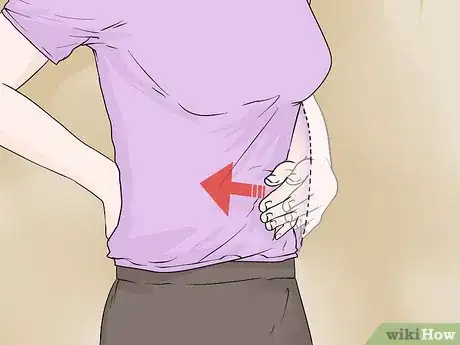





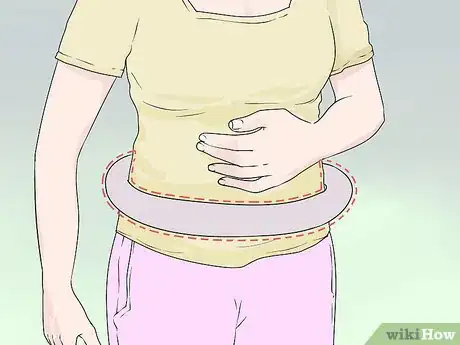



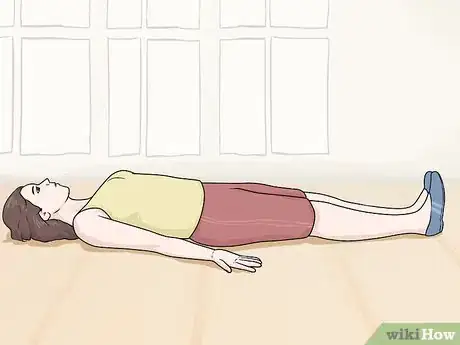

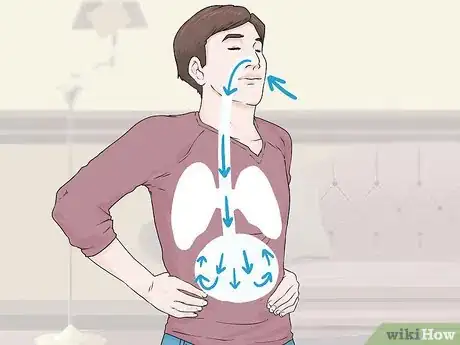







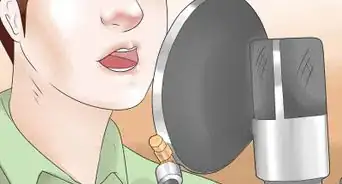
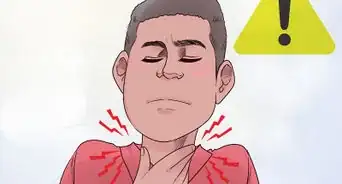






















































Medical Disclaimer
The content of this article is not intended to be a substitute for professional medical advice, examination, diagnosis, or treatment. You should always contact your doctor or other qualified healthcare professional before starting, changing, or stopping any kind of health treatment.
Read More...